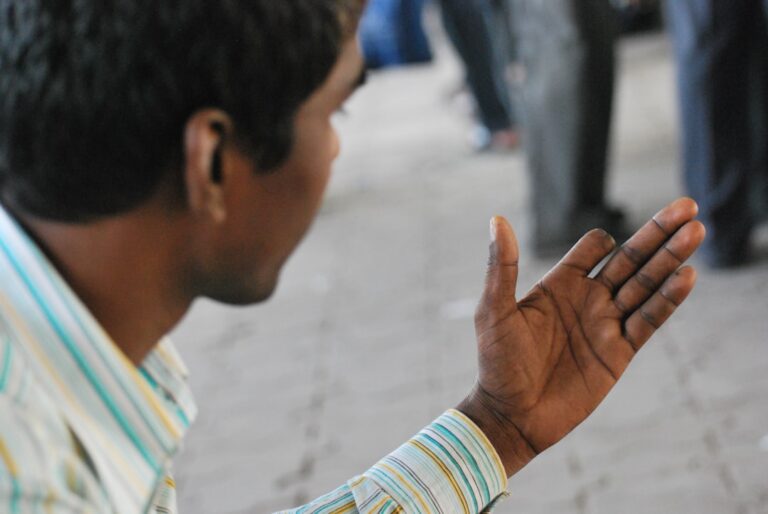Combat sports have always captivated audiences with their raw intensity and display of physical prowess. From ancient gladiatorial battles to modern-day mixed martial arts, these sports have evolved over time, but one thing remains constant – the presence of dominant fighters who reign supreme in the arena. These fighters, known as the Lords of Pain, are revered for their exceptional skills, unwavering determination, and ability to dominate their opponents.
The term “Lords of Pain” refers to those fighters who have established themselves as the most dominant figures in combat sports history. These individuals have achieved unparalleled success, often leaving a trail of defeated opponents in their wake. They possess a unique combination of physical attributes, technical proficiency, and mental fortitude that sets them apart from their peers. The Lords of Pain are not only admired for their physical abilities but also for their ability to endure and overcome the challenges that come with competing at the highest level.
Key Takeaways
- Lords of Pain are dominant fighters in combat sports who have a unique mindset and physical prowess.
- Combat sports have evolved from gladiators to modern-day warriors, with the rise of Lords of Pain being a significant factor.
- The most dominant fighters in combat sports history have a psychology of dominance that sets them apart from others.
- Losing in combat sports can take a significant emotional toll on fighters, while the physical toll of fighting can have long-term consequences.
- Becoming a Lord of Pain requires rigorous training and preparation, and the role of fans and media is crucial in the spectacle of combat sports.
The Evolution of Combat Sports: From Gladiators to Modern Day Warriors
Combat sports have a rich history that dates back thousands of years. Ancient civilizations such as the Greeks and Romans were known for their gladiatorial battles, where warriors would fight to the death for the entertainment of the masses. These battles were brutal and often ended in tragedy, but they laid the foundation for what would eventually become modern combat sports.
In contrast to the ancient gladiators, modern combat sports prioritize safety and fair competition. Rules and regulations have been put in place to protect fighters from unnecessary harm, and matches are closely monitored by referees and medical professionals. However, despite these advancements, the essence of combat sports remains the same – two individuals facing off in a physical contest to determine who is superior.
The Rise of the Lords of Pain: The Most Dominant Fighters in Combat Sports History
Throughout history, there have been several fighters who have established themselves as the Lords of Pain. These individuals have achieved unprecedented success and have left an indelible mark on the sport. One such example is Muhammad Ali, who is widely regarded as one of the greatest boxers of all time. Ali’s speed, agility, and unorthodox fighting style made him a formidable opponent, and his charismatic personality outside the ring only added to his legend.
Another example of a Lord of Pain is Anderson Silva, a Brazilian mixed martial artist who dominated the middleweight division in the UFC for nearly a decade. Silva’s striking ability and elusive footwork made him virtually untouchable, and he holds the record for the longest title reign in UFC history. His dominance inside the octagon earned him a place among the all-time greats of the sport.
What sets these Lords of Pain apart from their peers is not just their physical abilities but also their mental approach to fighting. They possess an unwavering belief in their own abilities and are able to maintain composure even in the face of adversity. Their mental fortitude allows them to overcome challenges and push through pain and fatigue, ultimately leading them to victory.
The Psychology of Dominance: Understanding the Mindset of the Lords of Pain
The mindset of a Lord of Pain is crucial to their success in combat sports. Fighting is not just a physical battle but also a mental one, and those who are able to master their emotions and maintain focus are often the ones who come out on top.
One aspect of the psychology of dominance is confidence. Lords of Pain have an unshakeable belief in their own abilities and are not easily intimidated by their opponents. They enter the arena with a sense of purpose and conviction, knowing that they have put in the necessary work to succeed.
Another important aspect is mental toughness. Lords of Pain are able to push through pain, fatigue, and adversity without losing focus or motivation. They have the ability to stay calm under pressure and make split-second decisions in high-stakes situations. This mental resilience allows them to overcome challenges and emerge victorious.
The Agony of Defeat: Exploring the Emotional Toll of Losing in Combat Sports
While the Lords of Pain are known for their dominance, they are not invincible. Even the most successful fighters experience defeat at some point in their careers, and the emotional toll of losing can be devastating.
Losing in combat sports can be a humbling experience, as it exposes weaknesses and highlights areas for improvement. Fighters often invest a significant amount of time, effort, and emotion into their training, so a loss can feel like a personal failure. It can lead to feelings of disappointment, frustration, and self-doubt.
However, the best fighters are able to learn from their losses and use them as motivation to improve. They understand that defeat is a part of the sport and that setbacks are opportunities for growth. They analyze their performance, identify areas for improvement, and come back stronger in their next fight.
The Physical Toll of Combat: Understanding the Risks and Consequences of Fighting

Combat sports are physically demanding and carry inherent risks. Fighters put their bodies on the line every time they step into the arena, and the toll it takes on their physical well-being can be significant.
Injuries are a common occurrence in combat sports, ranging from minor cuts and bruises to more serious injuries such as broken bones or concussions. The physical demands of training and competing can also lead to chronic pain and long-term damage to joints, muscles, and organs.
Additionally, fighters often have to undergo grueling weight cuts in order to make weight for their fights. This can have serious implications for their health, as extreme weight cutting can lead to dehydration, electrolyte imbalances, and other medical complications.
Despite these risks, fighters continue to compete because they are passionate about their sport and willing to make sacrifices for their craft. They understand the physical toll that fighting takes on their bodies but are willing to endure it in pursuit of greatness.
The Role of Training and Preparation in Becoming a Lord of Pain
Training and preparation are essential components of becoming a Lord of Pain. Fighters must dedicate themselves to a rigorous training regimen that includes physical conditioning, technical skill development, and mental preparation.
Physical conditioning is crucial for combat sports, as fighters need to have the strength, endurance, and agility to perform at their best. This often involves a combination of cardiovascular exercise, strength training, and flexibility work. Fighters also engage in sport-specific drills and sparring sessions to improve their technique and timing.
Technical skill development is another important aspect of training. Fighters must master various techniques such as striking, grappling, and submissions in order to be well-rounded competitors. They work with coaches and training partners to refine their skills and develop strategies for different opponents.
Mental preparation is often overlooked but is equally important. Fighters engage in visualization exercises, meditation, and other mental techniques to improve focus, concentration, and mental resilience. They also study their opponents’ strengths and weaknesses in order to develop effective game plans.
The Spectacle of Combat: The Role of Fans and Media in Combat Sports
Combat sports would not be what they are today without the support of fans and the media. These two groups play a crucial role in shaping the narrative around fights and creating a spectacle that captivates audiences.
Fans are the lifeblood of combat sports. They provide the energy and atmosphere that make fights memorable. Their passion and enthusiasm can be felt throughout the arena, creating an electric atmosphere that adds to the excitement of the event. Fans also play a role in shaping fighters’ legacies, as their support can elevate a fighter’s status and help them secure lucrative opportunities.
The media also plays a significant role in combat sports. They provide coverage and analysis of fights, helping to build anticipation and generate interest. Media outlets such as television networks, websites, and social media platforms provide a platform for fighters to showcase their skills and connect with fans. They also play a role in promoting the sport and attracting new audiences.
The Legacy of the Lords of Pain: Influencing Future Generations of Fighters
The Lords of Pain have left a lasting legacy in combat sports. Their dominance and achievements have inspired future generations of fighters to push the boundaries of what is possible in the sport.
The success of the Lords of Pain has shown aspiring fighters that greatness is attainable with hard work, dedication, and the right mindset. They have set a standard of excellence that future fighters strive to achieve, and their accomplishments serve as a benchmark for success.
The Lords of Pain have also paved the way for new techniques and strategies in combat sports. Their innovative approaches to fighting have forced other fighters to adapt and evolve, leading to advancements in the sport as a whole. Their influence can be seen in the way fighters train, strategize, and compete today.
The Future of Combat Sports: Predictions and Trends for the Next Generation of Lords of Pain
As combat sports continue to evolve, so too will the next generation of Lords of Pain. The sport is constantly changing, with new techniques, training methods, and rules being introduced. The next generation of fighters will need to adapt to these changes in order to establish themselves as dominant figures.
One trend that is likely to continue is the rise of well-rounded fighters who excel in multiple disciplines. As combat sports become more competitive, fighters who are proficient in striking, grappling, and submissions will have an advantage over those who specialize in only one area.
Another trend is the increasing emphasis on sports science and data analysis. Fighters are using technology and analytics to gain a competitive edge, tracking their performance, monitoring their training, and making data-driven decisions. This trend is likely to continue as fighters look for any advantage they can find.
In conclusion, the Lords of Pain are the most dominant fighters in combat sports history. They possess a unique combination of physical attributes, technical proficiency, and mental fortitude that sets them apart from their peers. These fighters have left a lasting legacy in the sport, inspiring future generations of fighters to push the boundaries of what is possible. As combat sports continue to evolve, the next generation of Lords of Pain will need to adapt to new techniques and trends in order to establish themselves as dominant figures.
If you’re a fan of the popular wrestling website Lords of Pain, you might be interested in checking out Tom’s Rant. In his latest article, Tom shares his thoughts on the world of professional wrestling and offers a unique perspective on the industry. From analyzing the latest matches to discussing the impact of storylines, Tom’s Rant provides an engaging and entertaining read for wrestling enthusiasts. To dive into Tom’s insights, click here: Tom’s Rant.
FAQs
What is the article “Lords of Pain” about?
The article “Lords of Pain” is not specified, so it is unclear what it is about.
Who are the Lords of Pain?
Without context, it is impossible to determine who the Lords of Pain are.
Is “Lords of Pain” a book or a movie?
It is unclear whether “Lords of Pain” is a book or a movie, as no information is provided.
Are the Lords of Pain a real group or organization?
Without context, it is impossible to determine whether the Lords of Pain are a real group or organization.
Is “Lords of Pain” related to sports or athletics?
It is unclear whether “Lords of Pain” is related to sports or athletics, as no information is provided.
Is “Lords of Pain” a violent or graphic article?
It is impossible to determine whether “Lords of Pain” is a violent or graphic article without context.














+ There are no comments
Add yours